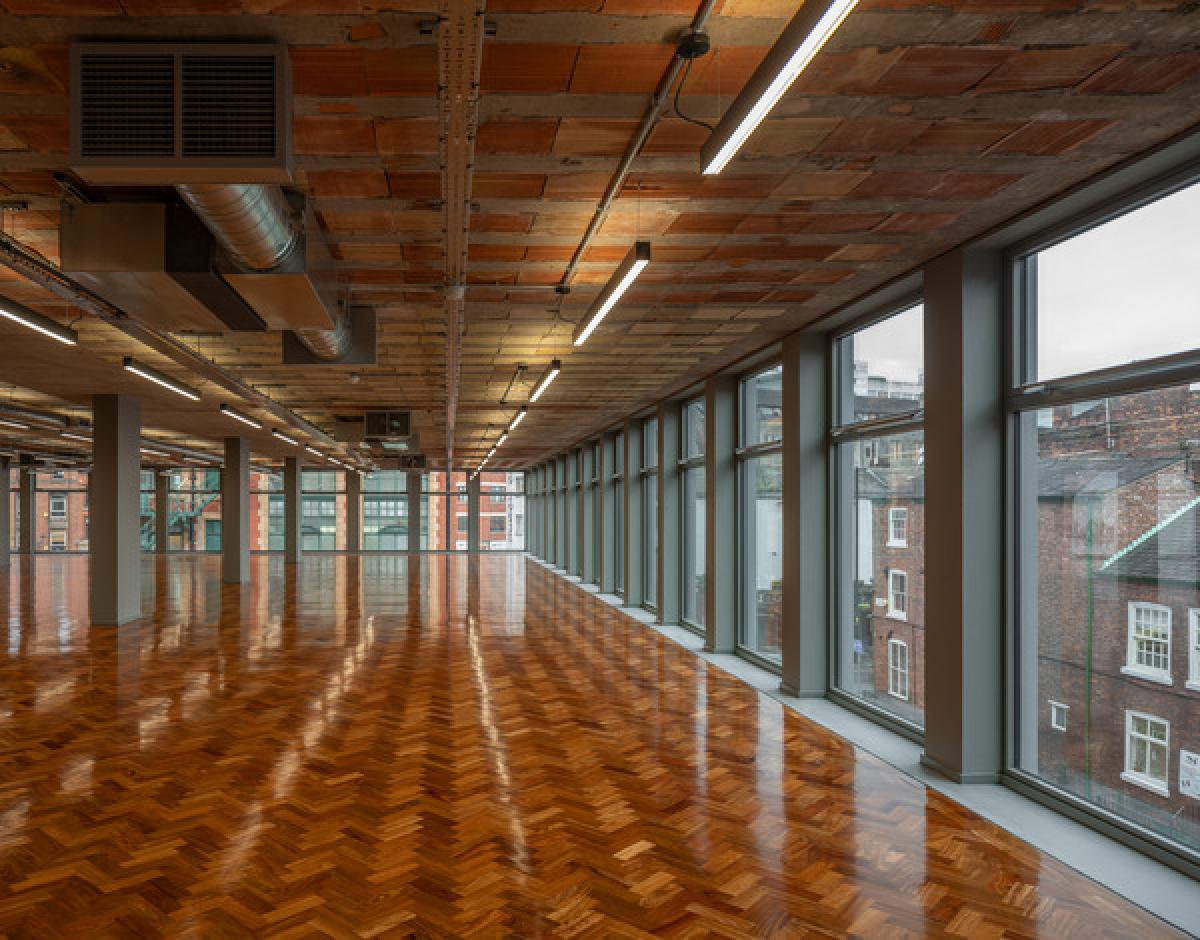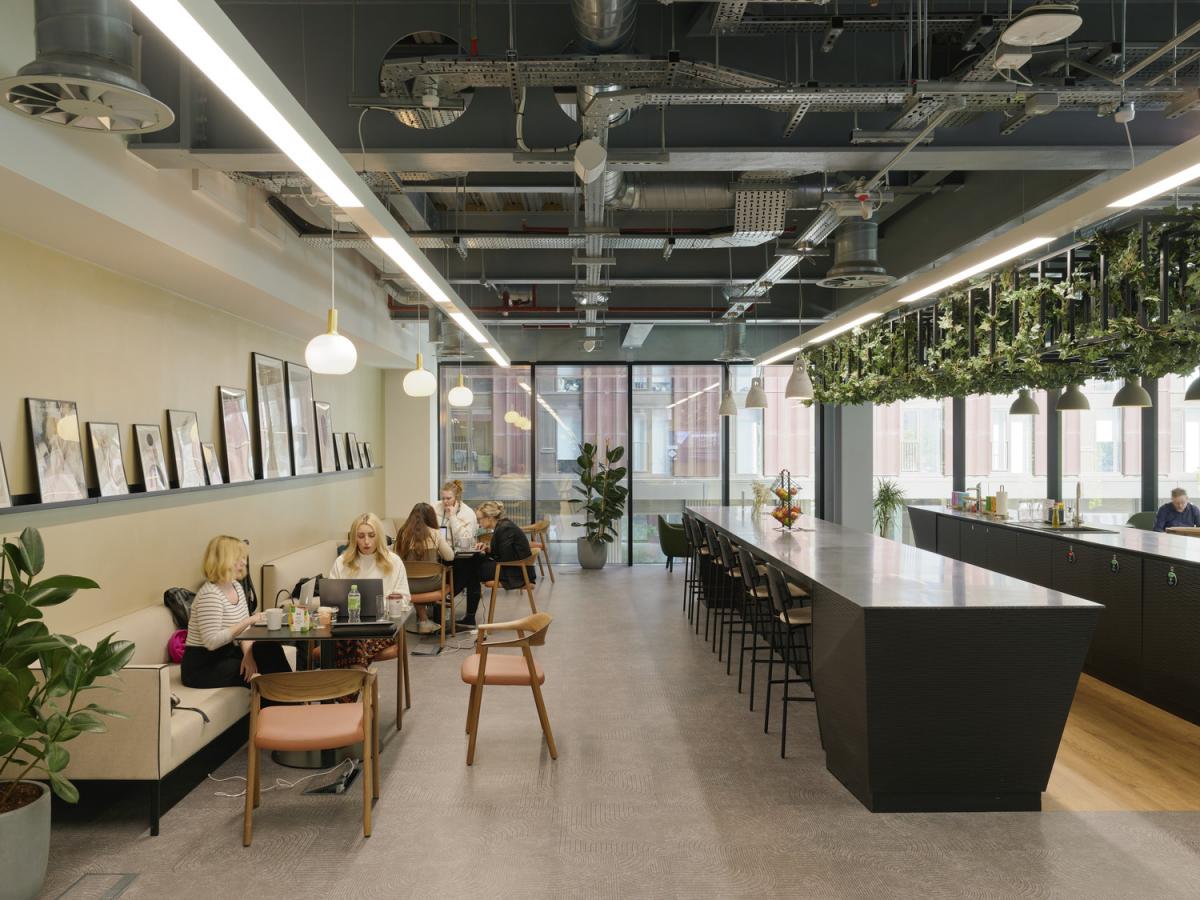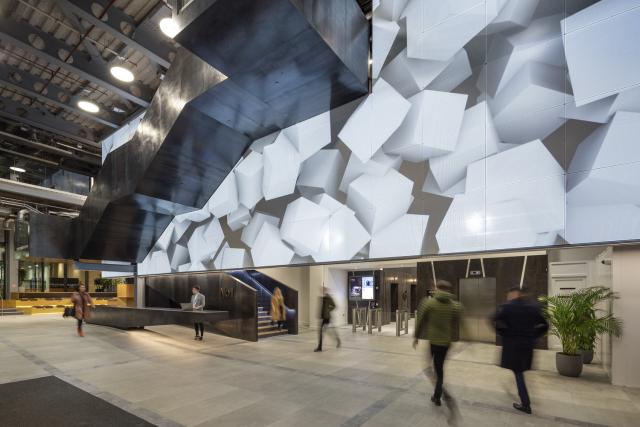Over the past year, our working practices have moved on by 10 years. The COVID-19 pandemic has transformed our views in terms of what we want and need from the places we live and work in. It has also shone a light on our ability to adapt and our resilience to change. With vaccines now being rolled out across the country and promises of a return to ‘normality’ on the horizon, now is the time to take stock and consider what we have learnt from this period of remarkable change.
Working from home has shown we can adjust to being more flexible in the way we work but it has also created new work and life challenges. What does this mean for our future working lives? How will the ‘new normal’ affect the spaces we work in, either at home or at work, and how flexible can we really be?
To delve deeper into some of these questions, we brought together individuals from a range of different professions and sectors to share their experiences of how the pandemic has impacted their working lives, and to gain their insight on what comes next. Also included in this debate, were students who provided a valuable insight into their expectations on behalf of our next generation of workers. Held as an interactive workshop, it was an opportunity to pool our collective knowledge and discuss how we set out the landscape for the future workplace.
Attendees included:
- Franky Rousell, Jolie Studio
- Heather Gray, Bruntwood Works
- Shannon Conway, Glenbrook Property
- David Boles, Buro Four
- Andy Cobbold, Buro Four
- William White, IN2 Engineering
- Shelagh McNerney - Freelance Consultant
- Chris Dessent, Creative Concern
- Charlotte Dean, P3PM
- Sallie Bate, Colourworks
- Judi Greenwood, Regeneration Brainery
- Neil Pinder, Architecture / Products Design Teacher Graveney School, Homegrown Plus & GLAM
- Emily Bates, Student at University of Liverpool (Town Planning)
- Tobi Sobowale, Student at Manchester School of Architecture
- Mark Ashmore, Future Artists
Evolving Working Patterns
Although working from home (WFH) has been mooted for a number of years, few organisations had fully embraced the concept. The pandemic, however, has forced businesses’ hand. Although most guests agreed working from home allowed for more time with their family, the ability to have a flexible schedule, as well as time and cost savings, very few would choose to work from home on a permanent basis. For the majority, their preference lay with a mix of home and office working, with many saying that they are most effective and felt more empowered when they had the choice of where to spend their working week.
Being able to spend part of their working week in the office was described as energising and helped maintain routine and discipline. A number of guests also agreed that returning to the office for part of the week had helped re-established a work life balance that some felt had been eroded in their experiences of working from home. One guest highlighted that before the pandemic, they believed society was reaching a place where there was a clear distinction between work and home time.
Working from home has blurred these lines and there was concern that the positive progress that had been made prior to the pandemic was at risk of reversal. Issues relating to privacy were also raised with some voicing unease at ‘inviting’ colleagues and clients into their homes. As a result, there was a call to businesses to implement measures that ensured the distinction between employees’ working and leisure time was being reinforced.
The Office of the Future
Most agreed although the pandemic has turned our understanding of working culture on its head, there is still very much a place for the office in our society. Contributors recognised that the office will continue to be important for many people for a myriad of reasons.
For employees at the start of their career who might be sharing a house with other young workers, the office will provide a place that affords them greater space and time to concentrate. For those who live alone the office’s function as a social hub may take on greater importance. In any case, the future workplace won’t necessarily be somewhere that we are conscribed to, on a 9 to 5 basis, but will evolve to become a place that we can be part of something bigger, where we can drop in and out of, and utilise as and when we require.
The function of the office will also change. Although it will continue be a place where we work, businesses will start to take a fresh look at their spaces.

Greater importance will be given to how buildings and spaces can be used to foster collaboration, allow people to forge social connections, and generate experiences that can’t be facilitated digitally.
Similarly, once the pandemic is over, businesses will need to go further in attracting people back into the office by creating environments that ensure people feel safe.
Although each office will differ according to specific organisational priorities, all agreed that flexibility will need to sit at the heart of the approach. Flexible and co-working office spaces were a growing trend before the pandemic but participants predicted that these types of buildings will take up a greater share of the commercial market in the future. Swapping traditional offices for a more flexible model will also help businesses scale up and down as people choose to use the office on a more part time basis.
Psychological Impact
While people have enjoyed the amenity and flexibility afforded by working from home, altering our domestic environments to enable effective working has been met with varying degrees of success.
After several months of working from home, we are now, more than ever, aware of the subliminal effect our environments have on our productivity, health and happiness. Contributors used the example, of moving through different rooms in their house to find a setting that allowed them to concentrate and feel comfortable, as a clear indicator of the powerful effect our environments can have on our physical and mental state.
As we move forward, many agreed that our domestic environments will begin to integrate some of the hallmarks of the office spaces we have left behind, such as appropriate furniture, technology and tools. Offices on the other hand, will become less sterile and static and become high-quality, comfortable environments that people want to spend time in.

Technology
Businesses have learned that a digital transformation project that would have normally been months or years in the making — for example, enabling an entire workforce to work remotely — can in reality be delivered much faster. Before COVID took hold, many organisations were already moving towards a working culture that embraced digital efficacy.
The impact of the pandemic, however, has accelerated this change, forcing businesses to become less risk-averse and more open to innovative and agile technologies.
An associated benefit of this has been that businesses have expanded their horizons and ability to attract and employ talent on an international scale. One contributor explained how prior to the pandemic they struggled to fill certain roles when selecting from a regional talent pool. Being able to recruit experienced individuals from Asia, Europe or the US has not only filled the skills gap but also has the potential to generate a more diverse pool of ideas and resources.
Technology will also play an important role in supporting long term mixed working patterns as well as enabling those who wish to return to the office to do so safely. Implementing reliable technology into future workplaces will help manage space availability, manage the flow of employees in and out of the building, manage cleaning schedules, and capture building data such as ventilation and airflow, all while ensuring that connectivity is maintained between employees, regardless of their location.
However, the group acknowledged that running a successful business consists of two key components, getting the work done and bringing the work in. While technology can help use deliver work more effectively, questions were raised as to how far it can go in helping organisations secure future work. For some, their strongest commercial relationships have been a product of chance meetings, shared experiences and face-to-face conversations. How can we continue to develop and nurture new and existing relationships in a predominantly virtual world?
Communication and Development
The majority recognised that working from home is here to stay, but that the human interaction and opportunities for socialising that the office provides is irreplaceable. Participants agreed that the shared experiences created by the office is conducive, and crucial to, creative and innovative thought. Several also indicated that in the long run, the need for human connection will be a strong influence on a migration back to the office.
Although organisations have adopted technologies that has enabled them to continue to collaborate remotely, there was a general consensus that the ‘water cooler moments’ and camaraderie that was central to most people’s working experience have been somewhat lost while WFH. Some also voiced concern that younger workers may be missing opportunities for experiential learning, development, and progression. As one contributor explained, observing how someone alters their behaviour when approaching a difficult situation and negotiates, communicates and influences to find a solution is a lesson can only typically be learnt while sharing a physical rather than virtual space.
Similarly, as we move towards more blended working patterns, there was some apprehension that division will be created between those who choose to work in the office and those who prefer to work from home, with those at the start of their career in particular, lacking visibility and missing opportunities to be seen and heard.
To combat this, business should look at how they can use and manage their workplaces to create community and cultural experiences that cannot be translated digitally. Suggestions included dedicating time in the working week where teams meet physically to connect and collaborate.


Conclusion and next steps
The roundtable provided an opportunity to bring together key voices from across many sectors to consider the future of the workplace in the light of COVID-19. The pandemic has forced the adoption of new ways of working and created opportunity for us to re-evaluate what the workplace means to us.
A move away from a rigid understanding of what the office and our working patterns should look like has the potential to empower businesses and individuals to adopt solutions and ways of working that can support improved productivity and creativity.
However, the pandemic has presented a major learning curve for businesses and many challenges still remain. As we near the milestone of a year of WFH, now is the time to look back on the last 12 months and examine what has worked and what has worked less well. It is also an opportunity to ask how we can effectively utilise design to ensure that a balance between home and work life is maintained as people opt for mixed working arrangements or long-term work from home situations.